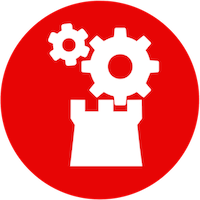27 Jan 2021
A (very) belated happy new year to you! 2021 isn’t behaving so far, but we have
high(er) hopes, as I’m sure do you.
In the meantime, we do what we can, and what we can do is work with node,
MongoDB, and the rest of the happy gang. To that end, we were delighted when
MongoDB introduced an integration for the VS Code editor,
and now they’ve gone and improved it! Specifically, one of the cracking new
features is the ability to update documents directly from VS Code. Splendid!
You can read more about the improvements in the official blog post,
What’s new in MongoDB for VS Code.
24 Dec 2020
Well. 2020 eh? No, let’s not go there. Instead, we should like to wish you all a
very happy holiday season.
The four of us are looking forward to spending some time with
(tier-reduced numbers of)
loved ones after a year that can only be described at various times as bizarre,
peculiar, sad, and terrifying.
Merry Christmas, and a healthy, happier new year to you all.
The LDC Via team
17 Mar 2020
Header image by NIAID Flickr link.
It’s an uncertain time for everyone, but one thing that has come into broad focus for many of us is the requirement to work from home for an indefinite period. As veteran home-workers, perhaps we can offer up a few pointers:
- Discipline can be difficult: plan your day either at the end of the previous day, or on the morning itself. Sketch out what you want to achieve, and roughly by when.
- Your workplace: make sure you have somewhere quiet-ish, and comfortable, in which to work.
- De-clutter: your working area needs to be usable, and clear!
- Ramp up the broadband. If you, like us, rely on being connected, consider upgrading your broadband connection if your contract and technology permit it.
- Take time out: be sure to give yourself plenty of breaks from screens (if applicable), and also from sitting in one position. Get some fresh air if you can, look at something else, drink plenty of water and wash your hands!
- Make use of online collaboration tools to connect with others. At LDC we use Slack all through the day for work stuff, and general chatter. As we all become a little more isolated, these connections are ever more important.
- Stop work. It’s too easy to just beaver away for hours on end. Ensure you have a hard stop time, and stick to it, putting things away for the next day.
Finally, people are making all kinds of things cheap or free to help us all. One pertinent addition in this regard is the book Take Control of Working From Home Temporarily, a free download.
03 Mar 2020
It’s here, Engage is upon us! Our very own
Woowar will be representing LDC Via this year,
at the Engage event in Arnhem, at Burgers Zoo.
Do seek out Julian, and by all means have a chat – especially if you want to
talk about application development services (node, Domino, .NET, Java, Google G
Suite, etc.) or
application and data migration. We deal with
platforms like Microsoft SharePoint, IBM Quickr, HCL Domino, IBM Connections and
more…
Have a great conference!
23 Dec 2019
It’s that time again, Christmas and the end of another year! Where do the days go… A year of extreme busy-ness at LDC Towers, we’ve had a lot of work on, and also a wedding! This all leads to general blog neglect. Shame on us.
Our venerable platform is happily serving up a multi-tenant web application for a big client, with more back-end changes afoot. Google apps script projects still abound, as do projects built using node. We’re still engaged with enterprise-scale migration projects, and we look after organisations from schools to insurance companies, finance outfits to consultancies. As ever, if you’re looking for assistance with your projects, by all means get in touch!
In March 2020, Engage 2020 comes to Arnhem, and I’m sure we will be there in some shape or form – have you registered yet?
For now, we wish you a peaceful, merry Christmas, happy holidays, and a splendid new year!




